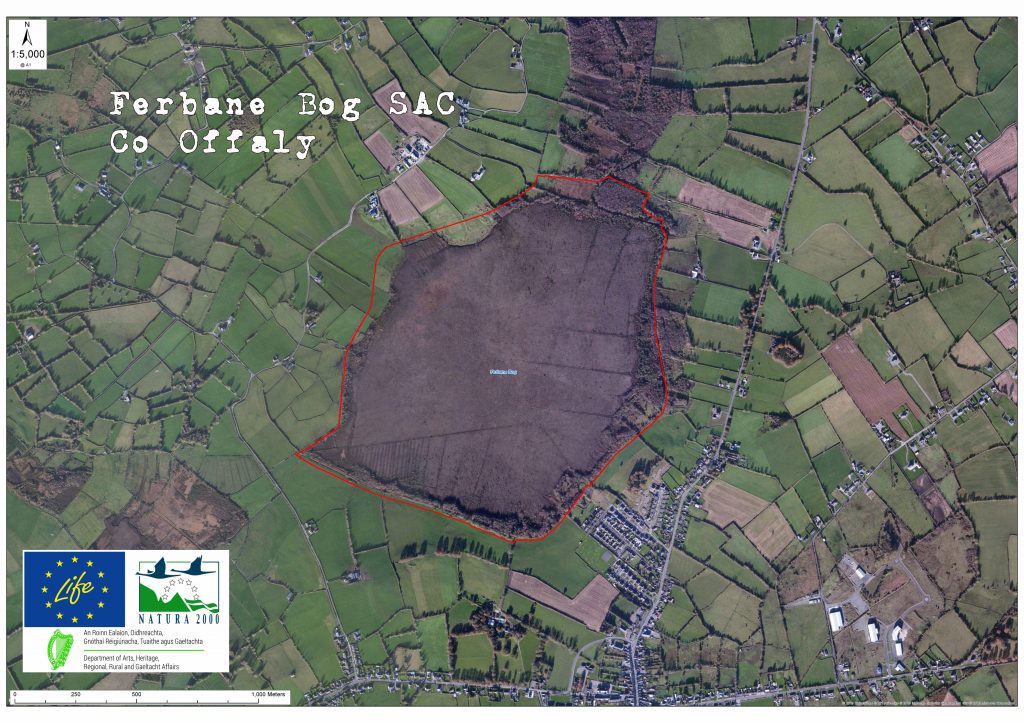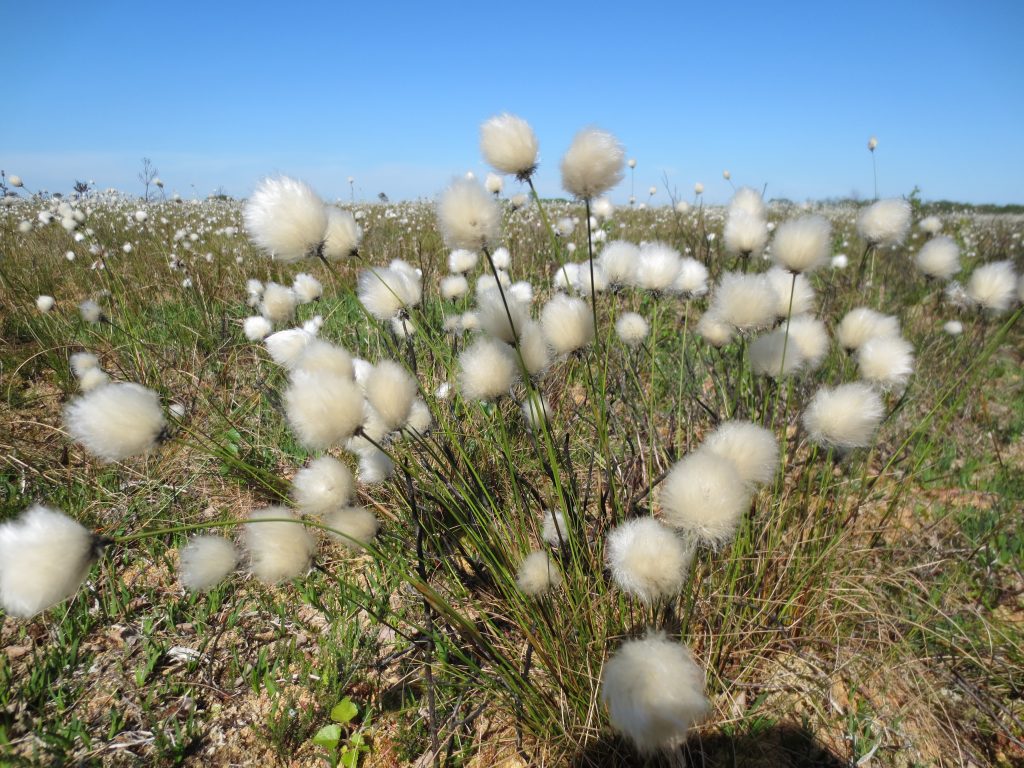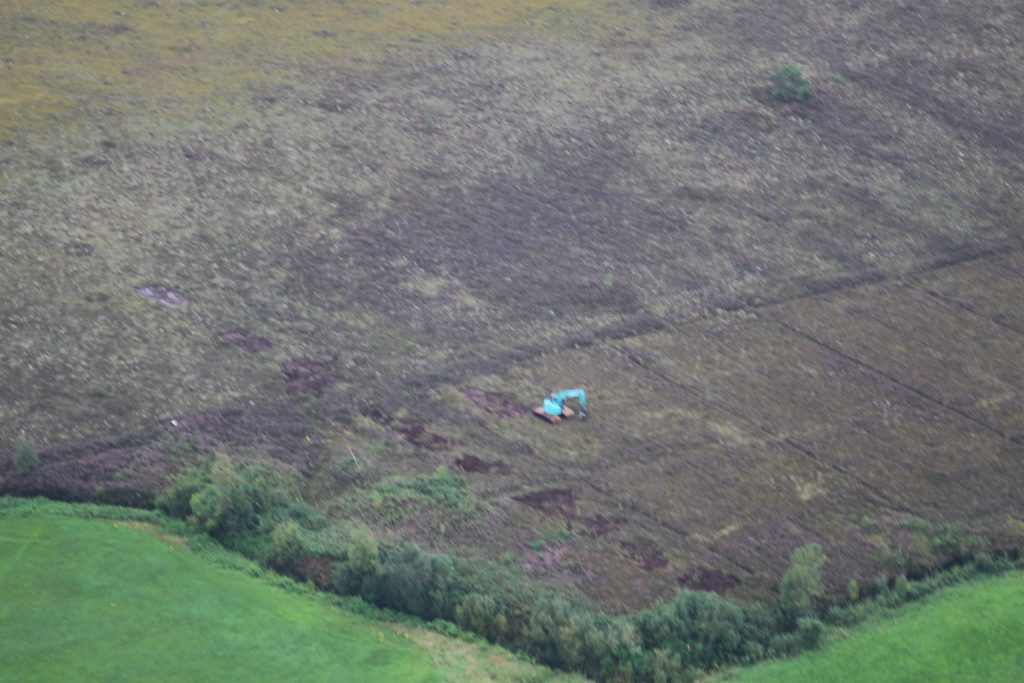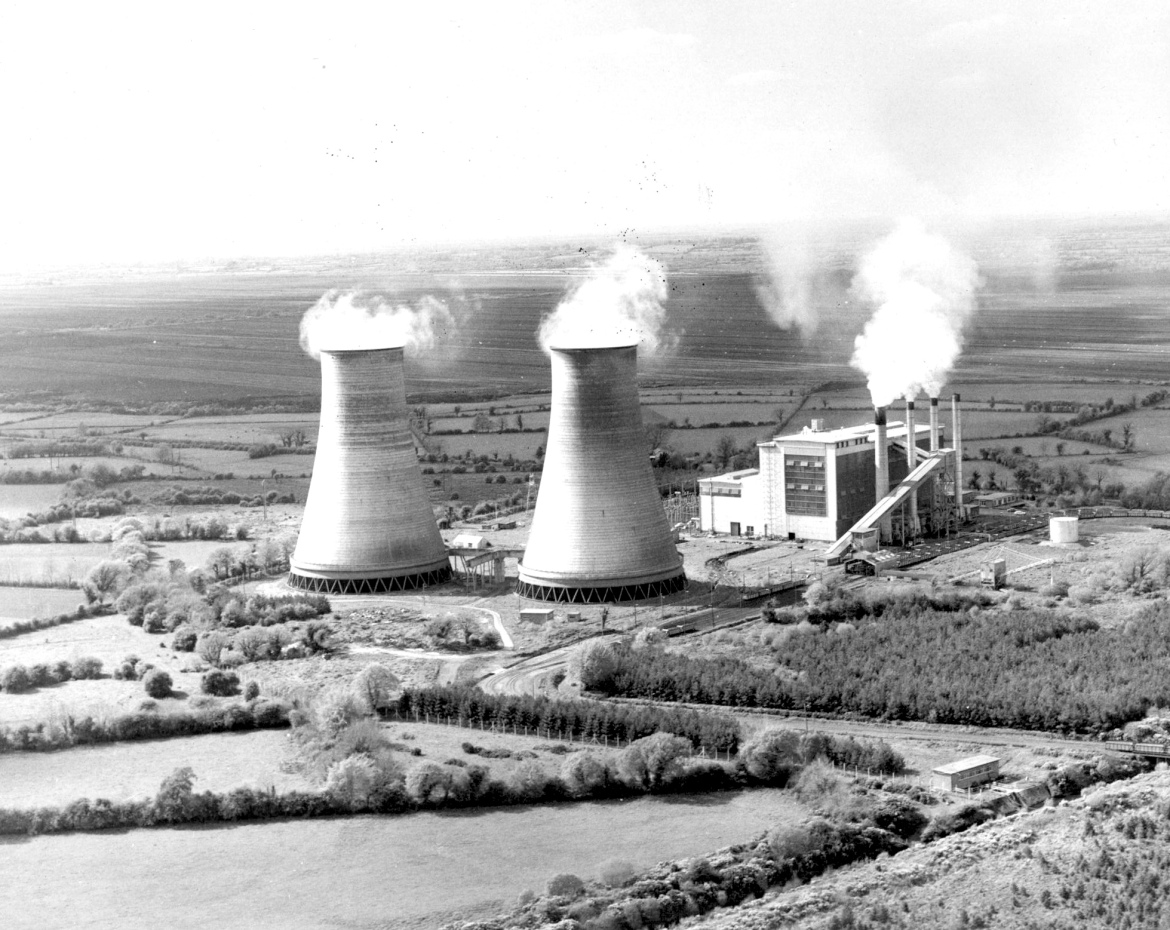About Ferbane Bog
With a surface area of 153.08 hectares, Ferbane Bog SAC is a relatively large, domed, raised bog situated north-west of Ferbane town. Of our 12 project sites it is the closest one to a town.
It is one of six Offaly bogs which are LIFE project sites, and is one of the finest examples of typical midlands raised bog of the basin type – wet and spongy and rich in flora (with Sphagnum cover reaching 100% in places). There are almost 100 species thriving on the high bog, and the bog as a whole supports a large number of birds, mammals and amphibians, with the threatened Curlew recently reported here. Other birds to have frequented Ferbane Bog include Snipe, Meadow Pipit, Skylark, Merlin, Kestral and Sparrowhawk.

Prior to our restoration works, uncut high bog dominates the site (119.96ha) and is surrounded by a narrow band of cutover (33.12ha) resulting from previous turf-cutting. Approximately 27% of the high bog surface consists of very wet active bog with the remainder degraded largely due to the hydrology being affected by peat cutting, drainage and other land use activities.
But, though 72% of the high bog may be classified as degraded, it is still capable of regeneration.
Ferbane Bog has suffered extensive drainage in the past, with the south and east traversed by drains. The drainage has caused significant drying out of the bog and past peat-cutting speeded up water loss, with exposed face banks and high bog drains multiplying the loss. An abundance of pines in three parts of the bog also indicated that this site is drying out.
However, although the high bog has suffered in terms of hydrology, it is still in a favourable, restorable condition and is rich in flora and fauna. Peat-cutting ceased on Ferbane in and around 2011.

Bog Cotton (Eriophorum angustifolium) -a plant of damp, peaty ground. Did you know Ferbane is named after it? Féar Bán, meaning white grass, is common in this part of the country.
In order to restore the hydrology of Ferbane bog, the LIFE project team blocked almost 16,000 metres of drains, among other restoration actions. Restoration works took place here between August 2019 and December 2019, and saw the installation of almost 1,200 peat dams and a number of plastic ones. The amount of works here were substantial compared to other project sites, with more dams installed only on Carrownagappul Bog in Galway.

Restoration works being undertaken on Ferbane Bog. Pic: Rebecca Teasdale.
Ferbane Bog is a fine example of a raised bog and is of considerable conservation significance. Active raised bogs are becoming increasingly rare in Ireland and Europe, and Ferbane is one of the best examples of what remains.
Ferbane bog is a candidate Special Area of Conservation (cSAC) selected for Active Raised Bogs 7110, Degraded Raised Bog 7120 and Depressions on peat substrates (Rhynchosporion) 7150 – habitats that are listed on Annex I of the EU Habitats Directive (992/43/EEC), where Active Raised Bogs 7110 is further ranked as a “priority” habitat.

